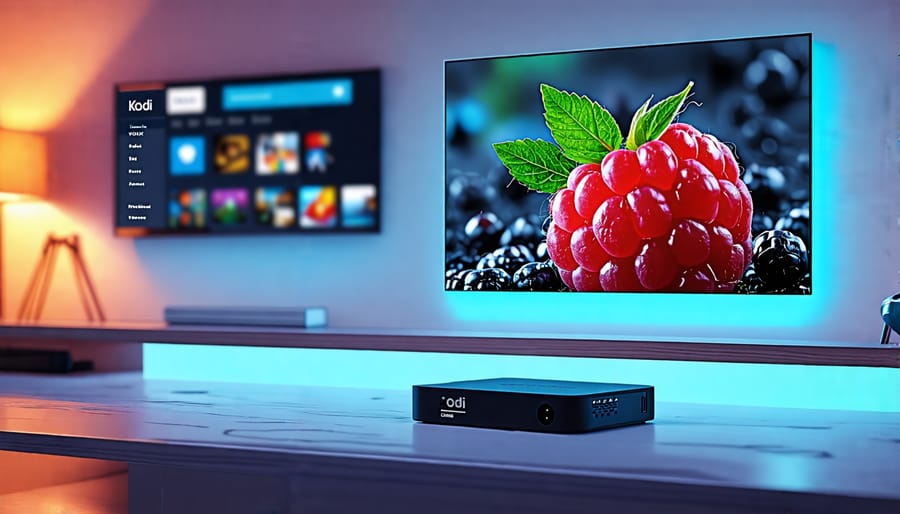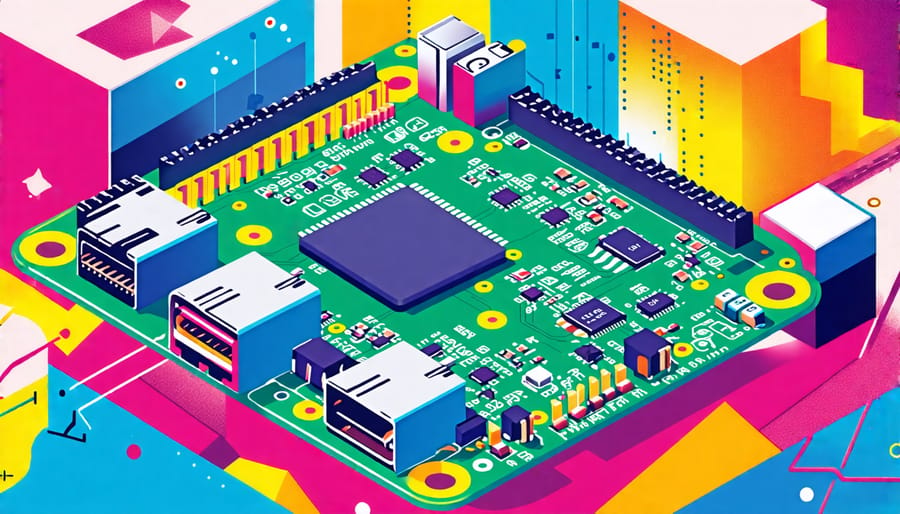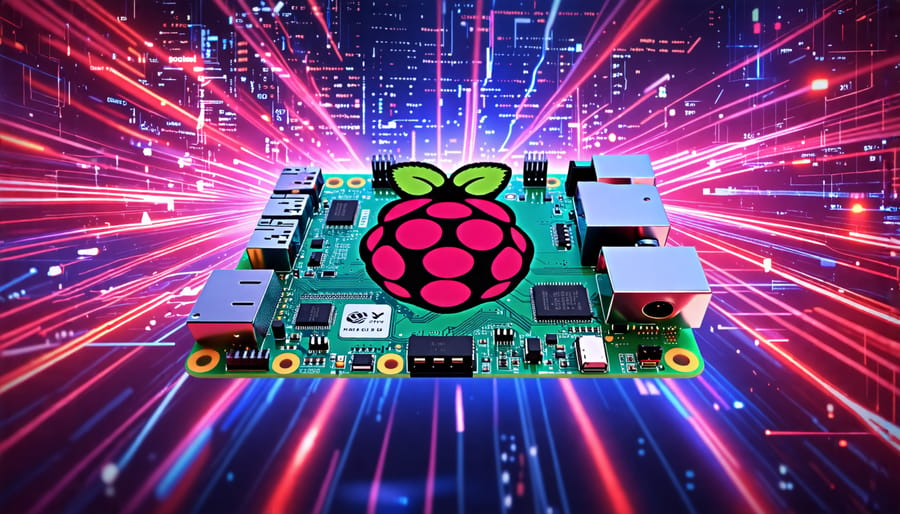Discover the power and versatility of the Raspberry Pi, the credit card-sized computer that’s revolutionizing the world of tech. From creating your own media center to automating your home, learning to code, and even building robots, the possibilities are endless with this tiny but mighty device. Whether you’re a seasoned programmer or a complete beginner, the Raspberry Pi offers an accessible and affordable platform to bring your ideas to life. Join us as we explore the most exciting and innovative use cases for the Raspberry Pi, and get ready to unleash your creativity and dive into the world of DIY tech projects.
Media Centers and Home Theaters
Setting Up a Raspberry Pi Media Center
Setting up a Raspberry Pi as a media center is straightforward. First, install a media center OS like Kodi or LibreELEC on your Pi. Connect the necessary peripherals, such as an HDMI cable for your TV, a USB drive or external HDD for media storage, and a remote or keyboard for navigation. Configure your network settings to access the internet or local media servers. Customize your media center by installing add-ons, configuring settings, and organizing your media library. With a bit of tinkering, you’ll have a lightweight, efficient media center that can play movies, TV shows, music, and more. The Raspberry Pi’s compact size and low power consumption make it an ideal choice for a dedicated home theater device.

Enhancing Your Media Center Experience
To enhance your Raspberry Pi media center experience, consider adding a remote control for convenient navigation. The FLIRC USB dongle allows you to use any IR remote, while the CEC adapter enables control via your TV remote. Expand your media library by integrating streaming services like Netflix or Plex, or set up a DVR system with TVHeadend to record live TV. Customize the interface with skins and themes, and install add-ons for features like weather updates or gaming emulators. With these additions, your Raspberry Pi media center becomes a powerful, all-in-one entertainment hub tailored to your preferences.

Retro Gaming Machines
Building a Raspberry Pi Retro Gaming Console
Building a retro gaming console with a Raspberry Pi is an exciting project for gaming enthusiasts and hobbyists. To get started, you’ll need a Raspberry Pi board, a compatible operating system like RetroPie or Recalbox, and a microSD card. Begin by installing the OS on the microSD card and configuring the basic settings. Next, connect your Raspberry Pi to a display, game controllers, and power supply. Use the built-in software to download and install your favorite classic games from various retro gaming systems. With a bit of tinkering and customization, you’ll soon be reliving your childhood gaming memories or discovering classic titles for the first time on your very own Raspberry Pi retro gaming console.
Raspberry Pi Arcade Cabinet Projects
Raspberry Pi’s compact size and versatility make it an ideal platform for creating your own custom arcade cabinet. Many gaming enthusiasts have used Raspberry Pi to build impressive DIY arcade machines, ranging from tabletop designs to full-size upright cabinets. With the help of emulation software like RetroPie or Lakka, you can run classic games from popular consoles and enjoy a nostalgic gaming experience. Some projects even incorporate features like multiplayer controls, high-resolution displays, and realistic arcade buttons and joysticks. Whether you’re a retro gaming fan or simply enjoy the challenge of building your own entertainment system, a Raspberry Pi arcade cabinet project is a rewarding and fun undertaking. You can even host multiplayer gaming sessions by setting up a Minecraft server on your Raspberry Pi, allowing friends to join in on the fun.
Home Automation and IoT Hubs
The Raspberry Pi is a versatile tool for home automation and Internet of Things (IoT) projects. With its low power consumption, compact size, and powerful processing capabilities, it serves as an ideal hub for controlling smart home devices and automating tasks. By connecting various sensors, actuators, and devices to the Raspberry Pi, you can create a centralized system to monitor and manage your home environment.
To set up a Raspberry Pi as a home automation hub, you can use popular software platforms like Home Assistant, OpenHAB, or Mozilla WebThings. These open-source solutions provide user-friendly interfaces and support a wide range of protocols, such as Z-Wave, Zigbee, and MQTT, enabling seamless integration with smart bulbs, thermostats, security cameras, and more. With a Raspberry Pi at the core of your smart home, you can automate lighting, climate control, energy management, and security systems based on schedules, sensor data, or voice commands.
Dive into the world of home automation by exploring exciting home automation projects that leverage the Raspberry Pi’s capabilities. From building a smart doorbell to creating a voice-controlled media center, the possibilities are endless. As you embark on your IoT journey, the Raspberry Pi community offers a wealth of resources, tutorials, and support to help you bring your smart home vision to life.

Personal Web Servers and Cloud Storage
The Raspberry Pi can function as a low-power web server or personal cloud storage device, offering an affordable alternative to cloud hosting services. By installing web server software like Apache or Nginx, you can host your own website or web application right from your Raspberry Pi. Similarly, setting up a cloud storage solution such as Nextcloud or Seafile allows you to store, access, and sync your files from anywhere, without relying on third-party services. While cloud hosting providers offer scalability and advanced features, a Raspberry Pi web server or cloud storage system gives you complete control over your data and can be a cost-effective option for small-scale projects or personal use. Plus, with the ability to network boot your Raspberry Pi, you can create a reliable and efficient setup that runs 24/7 without the need for an SD card.
Network Monitoring and Ad-Blocking
A Raspberry Pi can be an effective tool for network monitoring and ad-blocking, offering privacy benefits and customization options that surpass many off-the-shelf solutions. By setting up a Pi-hole on your Raspberry Pi, you can create a network-wide ad-blocking system that filters out unwanted advertisements and trackers across all connected devices. This not only improves your browsing experience but also enhances privacy and security by reducing the risk of malware and phishing attempts often delivered through malicious ads.
Moreover, a Raspberry Pi running Pi-hole allows for granular control over your network traffic, enabling you to monitor and analyze queries, block specific domains, and whitelist trusted sites as needed. This level of flexibility is particularly advantageous compared to browser-based ad-blockers, which may not cover all devices or applications consistently. With a Raspberry Pi-based solution, you can ensure comprehensive protection for your entire network, including smart TVs, gaming consoles, and mobile devices.
Setting up Pi-hole on a Raspberry Pi is a straightforward process, thanks to the active developer community and extensive documentation available. The low power consumption and compact size of the Raspberry Pi make it an ideal choice for running network monitoring and ad-blocking tools continuously without significant impact on your energy bills or physical space.
Educational Platforms and Programming
The Raspberry Pi has revolutionized computer science education, offering an affordable and accessible platform for learning programming concepts. Its user-friendly interface and wide range of supported programming languages make it an ideal tool for beginners and experienced coders alike. Popular languages like Python, Java, C++, and Scratch can be easily learned and practiced on the Raspberry Pi.
Numerous educational resources and tutorials are available online, guiding users through the basics of programming and helping them develop their skills. The Raspberry Pi Foundation also provides a variety of educational materials, including project guides and lesson plans, to support educators in integrating the device into their classrooms.
Integrated Development Environments (IDEs) such as Thonny, Geany, and Greenfoot come pre-installed on Raspberry Pi OS, providing a seamless coding experience. These IDEs offer features like syntax highlighting, code completion, and debugging tools, making the learning process more efficient and enjoyable.
Moreover, the Raspberry Pi’s GPIO pins enable users to interact with the physical world through programming. By connecting sensors, motors, and other components, learners can create exciting projects that bridge the gap between software and hardware. For example, our robotics lesson demonstrates how to build and program a robot buggy using a Raspberry Pi, offering a hands-on learning experience.
Conclusion
The Raspberry Pi’s versatility and affordability make it an indispensable tool for a wide range of projects. From media centers and retro gaming consoles to smart home devices and educational platforms, this tiny computer has proven its worth in countless applications. Its accessibility and active community support empower users of all skill levels to bring their ideas to life. Whether you’re a seasoned developer or a curious beginner, the Raspberry Pi offers endless opportunities for creativity and innovation. We encourage you to explore the vast array of resources available, experiment with your own projects, and share your experiences with the vibrant Raspberry Pi community. With its limitless potential, the Raspberry Pi will undoubtedly continue to inspire and enable groundbreaking projects across diverse fields.


